Flight to Mars (film)
5.2 /10 1 Votes
Country United States | 5.2/10 IMDb Genre Sci-Fi Duration Language English | |||||||||||||||||||||||||||||||||
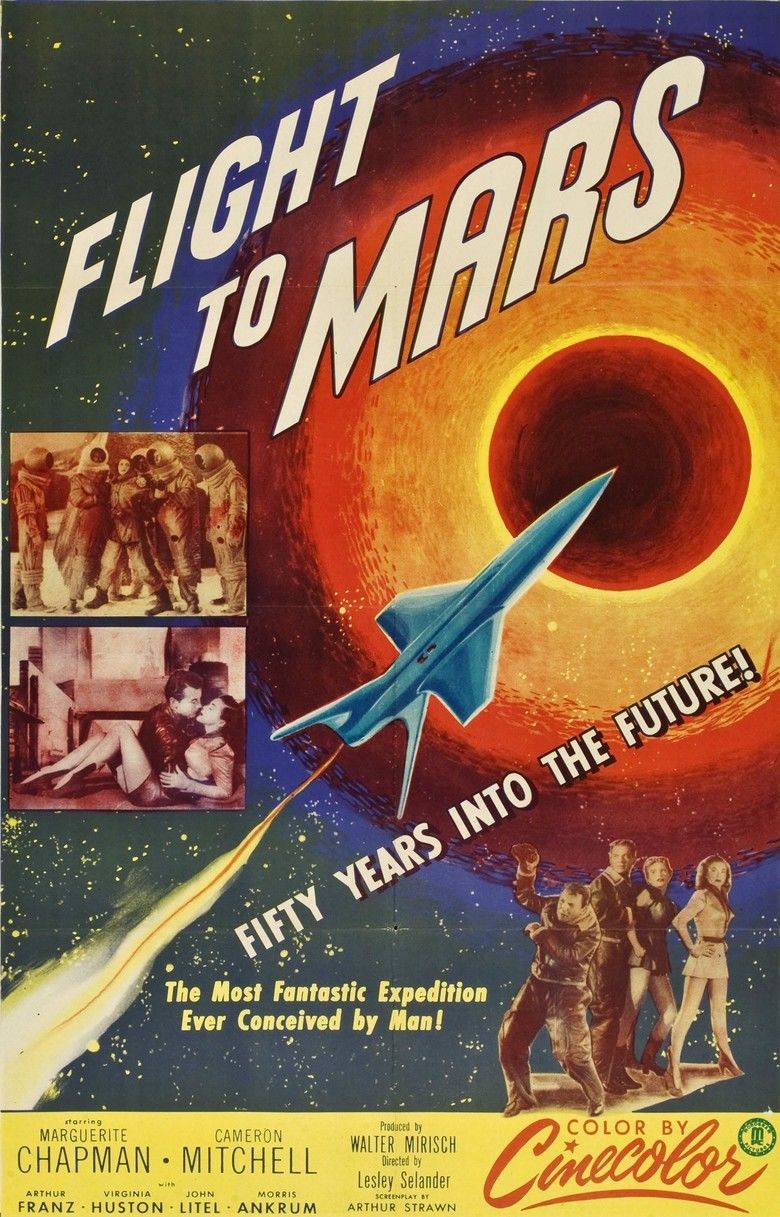 | ||||||||||||||||||||||||||||||||||
Writer Arthur Strawn (screenplay) Release date November 11, 1951 (1951-11-11) (United States) Cast (Alita), (Steve Abbott), (Dr. Jim Barker), (Carol Stafford), (Dr. Lane), (Ikron) Similar movies Interstellar , The Martian , Guardians of the Galaxy , 2001: A Space Odyssey , Independence Day , Avatar Tagline The Most Fantastic Expedition Ever Conceived by Man! | ||||||||||||||||||||||||||||||||||
Theatrical trailer for flight to mars 1951
Flight to Mars is a 1951 American Cinecolor science fiction film, produced by Walter Mirisch for Monogram Pictures, directed by Lesley Selander, that stars Marguerite Chapman, Cameron Mitchell and Arthur Franz.
Contents
- Theatrical trailer for flight to mars 1951
- Flight to mars 1951 film trailer
- Plot
- Production
- Reception
- References
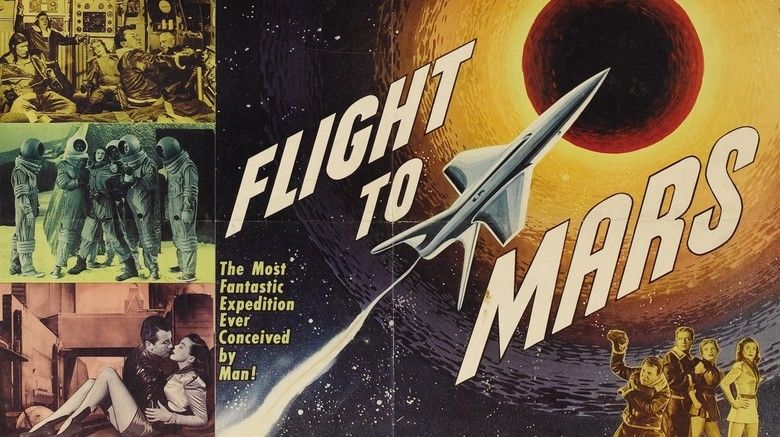
The film's storyline involves the arrival on the Red Planet of an American scientific expedition team, who discover that Mars is inhabited by an underground-dwelling but dying civilization that appear to be human. The Martians are suspicious of the Earthmen's motives. A majority of their governing body finally decides to keep their visitors prisoner, never allowing them to return home with the information they have discovered. But the Earthmen have sympathizers among the Martians. Soon a plan is set in motion to smuggle the scientists and their Martian allies aboard the guarded spaceship and make an escape for Earth.
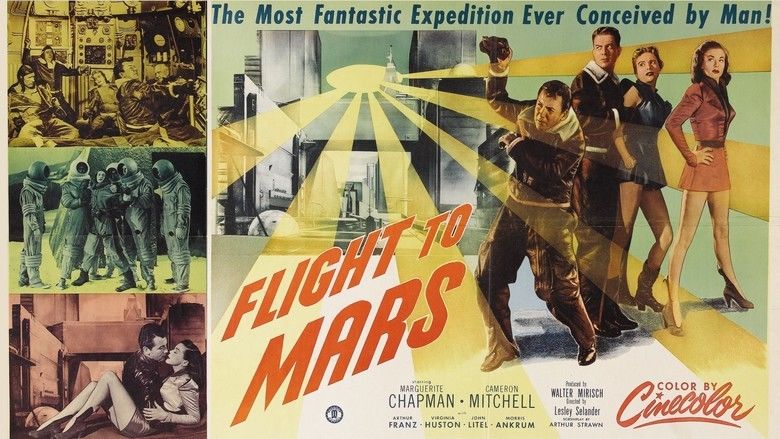
Flight to mars 1951 film trailer
Plot
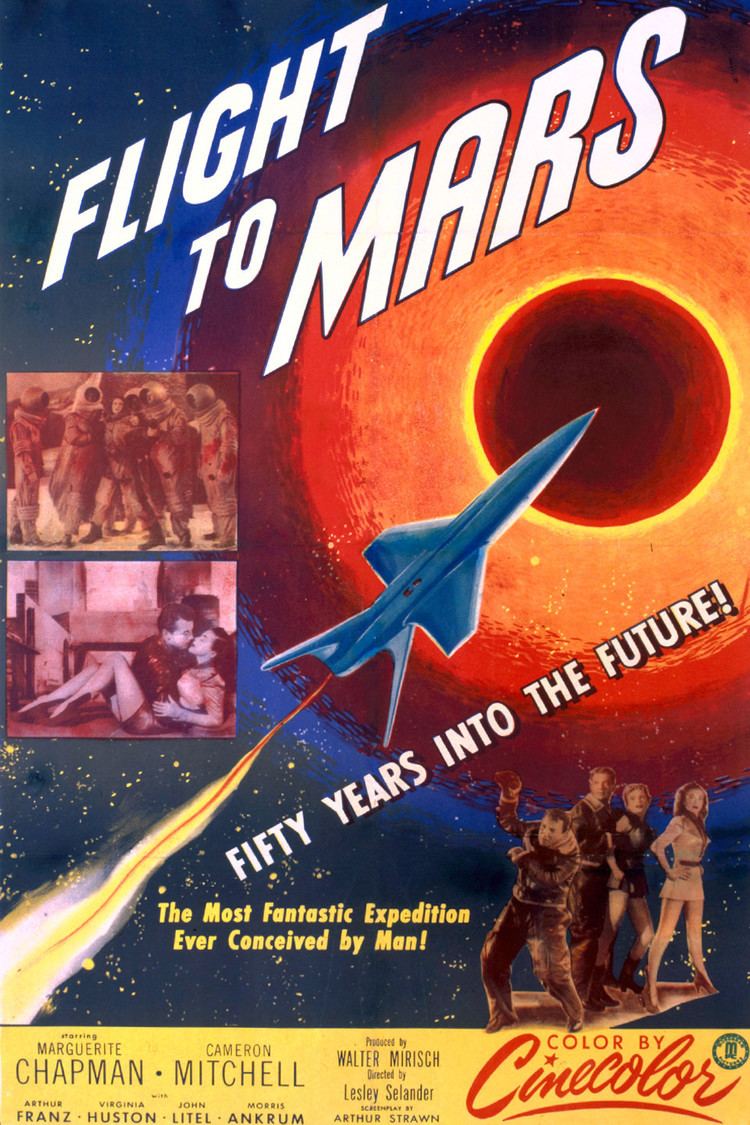
The first expedition to Mars, led by physicist Dr. Lane (John Litel), includes Professor Jackson (Richard Gaines), engineer Jim Barker (Arthur Franz), and his assistant Carol Stadwick (Virginia Huston). Journalist Steve Abbott (Cameron Mitchell) is also aboard to cover the historic mission. A final interview with his crew mates before launch makes him realize that there are grave risks for them all.

They lose contact with Earth when a meteor storm disables both their landing gear and radio. The crew is forced to decide whether to crash-land on Mars or turn back for Earth. Professor Jackson makes the case that the purpose of their expedition is to collect data, data which they can send back to Earth using self-propelled space cylinders equipped with homing devices. They decide to proceed with the mission, knowing they can never return.

After they safely crash-land, the crew are met by five Martians at one of their above ground structures. Looking human and being able to communicate in English, their leader, Ikron (Morris Ankrum), the president of their planetary council, explains that they have been receiving Earth's broadcasts by which they learned our languages. Their own efforts, however, to transmit messages to Earth have only resulted in faint signals being transmitted.
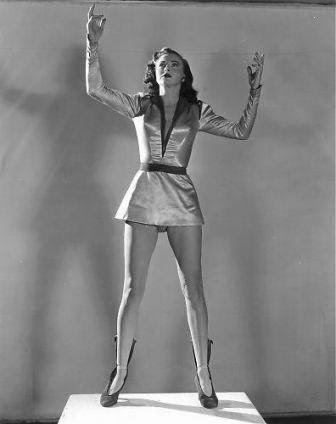
The Earth crew are brought by the Martians to a vast underground city, which is being sustained by life-support systems fueled by a mineral called Corium. There the crew meet Tillamar (Robert Barrat), a past president and now a trusted council advisor. Terris (Lucille Barkley), a young female Martian shows them to their room and serves the group automated meals. The expedition members are amazed at the high level of Martian technology around them and soon ask the council for help with repairing their spaceship.
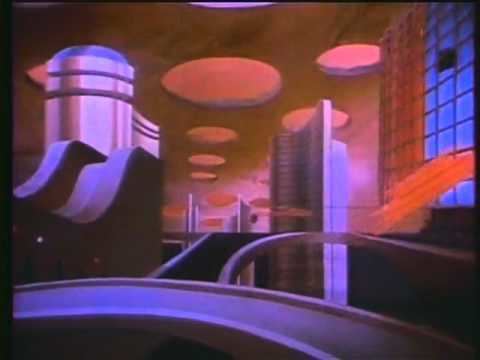
Discreetly, Ikron reveals that their Corium supply is nearly depleted. He recommends that the Earthmen's spaceship be reproduced, once repaired, creating a fleet that can evacuate the Martians to Earth. The council votes to adopt Ikron's plan, while also deciding to hold the Earthmen captive during the repair process. Alita (Marguerite Chapman), a leading Martian scientist, is placed in charge of the spaceship. Ikorn keeps himself informed of the progress by using Terris as a spy. Jim begins to suspect the Martians' motives and fakes an explosion aboard, slowing the ship's repairs. When Jim later announces their blast-off for Earth is set for the next day, he surprises everyone with the news that Tillamar and Alita will be joining them.
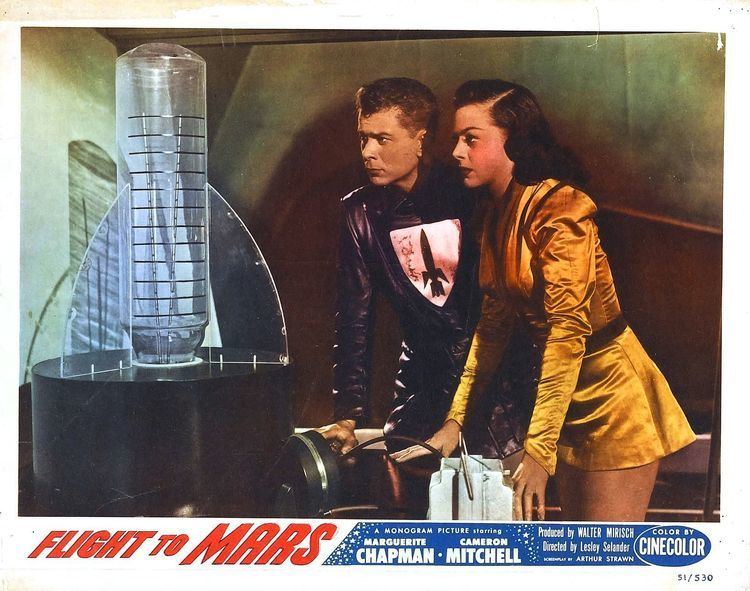
Terris reports their suspicious behavior, leading to Alita and Tillimar being held, but Jim foils Ikron's plan to seize the repaired Earthship after freeing both. After a brief confrontation with Martian guards at the spaceship's gangway, the three make it aboard safely, and the expedition is able to safely blast-off for Earth.
Production
Flight to Mars has some plot similarities to the Russian silent film Aelita, but unlike that earlier film it is a low-budget "quickie" shot in just five days.
The film's on location principal photography took place in Death Valley, California from May 11 through late May 1951.
Except for some of the flight instruments, Flight to Mars reuses the interior flight deck sets, somewhat redressed, and other interior props from Lippert Pictures' 1950 science fiction feature Rocketship X-M. Even that earlier film's spaceflight sound effects are reused, as are the concepts of space flight outlined in RX-M's screenplay. The main difference is this film was shot in color, not black-and-white, and the flight to Mars was planned; the earlier Lippert film concerns an accidental journey to the Red Planet, which happens during a planned expedition to the Moon. Additionally, Flight to Mars postulates a humanoid species which is superior, in many ways, to humanity, and could possibly pose a long-term, strategic threat. In the Lippert film, however, the Martians are a throw-back, a consequence of a long ago nuclear holocaust, which occurred millennia earlier; those Martians pose only an immediate, tactical threat to the RX-M's crew.
A sequel, Voyage to Venus was proposed but never made.
Flight to Mars is not in the public domain. The copyright was renewed under Certificate # RE-26-731/RE-37-81 from the Copyright Office, Library of Congress. Rights were assigned to Wade Williams.
Reception
The New York Times film review notes: "Flight to Mars is the second American film of the postwar era (after the previous year's Rocketship X-M) to depict a manned space trip to the Red Planet." Critical reaction to Flight to Mars was not positive. Film reviewer Glenn Erickson characterized the film as derivative. "Of all the early space movies, none is so disappointing as Flight to Mars. Destination Moon was scientifically accurate, and Rocketship XM had a gripping dramatic script. This copycat production has neither." He further described the shoddy production values as, "Producer Walter Mirisch put the show together from found items - the ship interior is from Rocketship XM, and the Martian suits from Destination Moon."
References
Flight to Mars (film) WikipediaFlight to Mars (film) IMDbFlight to Mars (film) themoviedb.org
